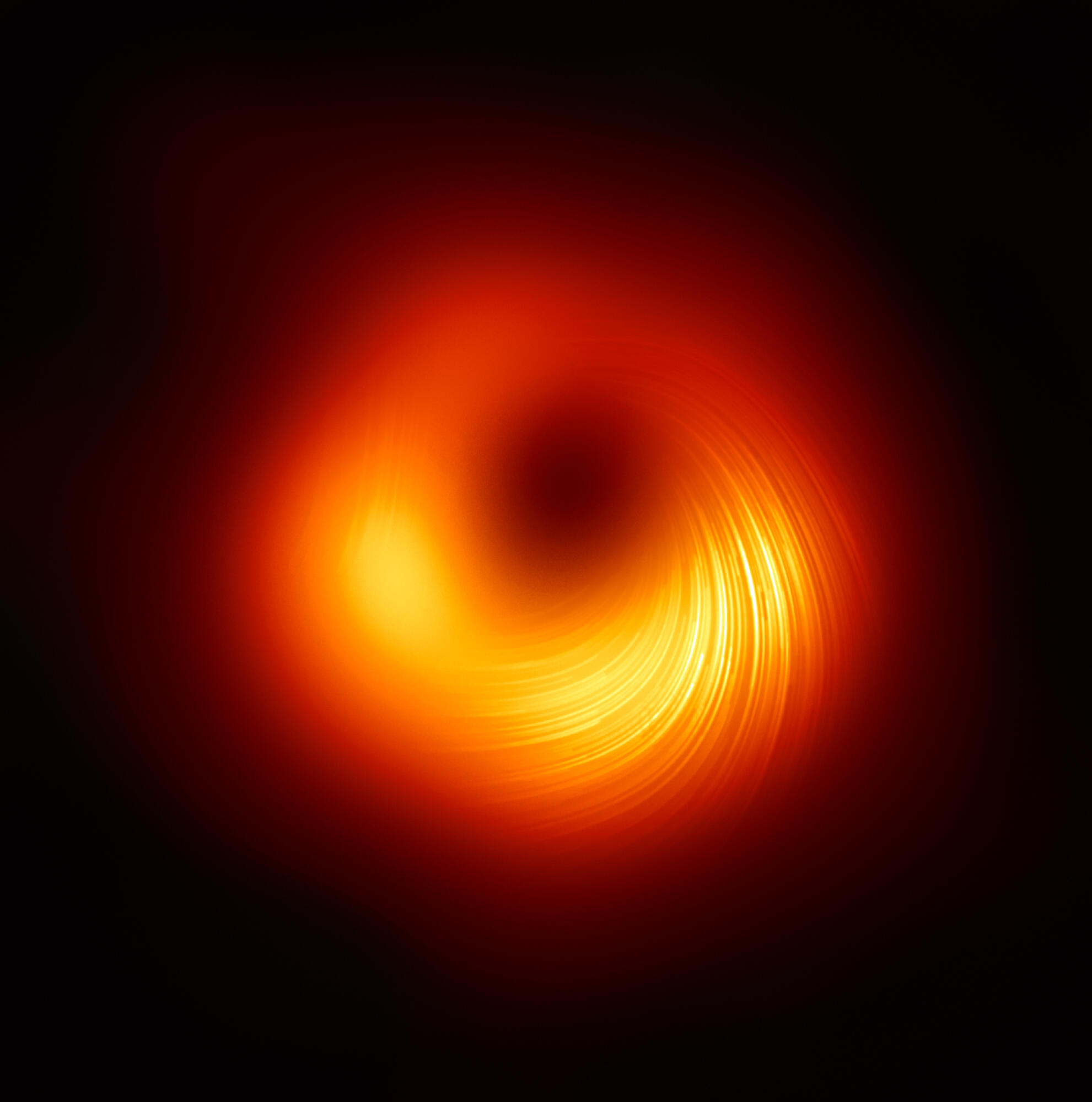Astronomers have released a brand-new image of the supermassive black hole at the center of the M87 galaxy. It’s a sharper follow-up to a historic 2019 picture, showing the polarized light that traces the monster’s magnetic field lines.
The background: The Event Horizon Telescope made history on April 10, 2019, when it released the first ever image of a black hole. The bright orange circle, located 53 million light-years away, was imaged by eight radio observatories across four separate continents. Their combined resolution was able to peer all the way out into the center of M87 and glimpse the glowing light from the ultra-hot gas and dust swirling around the supermassive black hole’s event horizon (the point of no return, where the black hole’s gravity is so powerful no light or matter can escape its clutches).
What’s new here: In a pair of new studies published in the Astrophysical Journal, astronomers went back through the archive of data that led to the first image and analyzed the movement of polarized light around the object. Light waves normally oscillate back and forth, in many different directions. But these waves can become polarized by magnetic fields, and that oscillation becomes confined to a single linear plane. This light effectively traces the black hole’s magnetic field lines, creating a sharper visual than the blurred doughnut shown off in 2019.
Don’t settle for half the story.
Get paywall-free access to technology news for the here and now.
